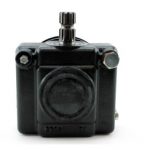Applying herbicide is a ritual for many lawn owners at the beginning of spring. Those who have problems with crab grass may view applying herbicide as a precautionary measure, while there are others who spray their lawns only after they become infected. In this post, we review the different types of herbicide and offer some hints concerning their application.
There are two varieties of herbicide: pre-emergent and post-emergent. Pre-emergent herbicides are applied in order to prevent the infection of your seeds. It is administered in the spring to prevent crab grass, and it generally accomplishes its task for half a year or so. Those considering whether to use pre-emergent herbicide do need to bear in mind that it will restrain the seeds in your soil, so just make sure that you don’t have any major re-seeding projects on the schedule.
Post-emergent herbicides are administered after the outbreak of weeds, and they will quash germination after it begins. When deciding on a post-emergent herbicide, you also have to consider whether you want a selective herbicide or a non-selective one. With selective herbicides, the weeds you want removed are targeted without harming the surrounding grass; selective herbicides are less powerful but really a superior option if you have grass that you want to protect. On the other hand, non-selective herbicides kill weeds and grass. However, these products, such as Round-Up, will only kill what is sprayed; therefore, you just need to be careful with where you spray it. For this reason, make sure that you keep these products away from your hands and eyes, wearing gloves and eye protection at all times. Ultimately, non-selective herbicides are fine, but they just require a skilled hand to administer them; those of you who are less experienced may find it necessary to use selective herbicides, and spraying pre-emergent herbicides will protect your lawn before an outbreak ever develops.







